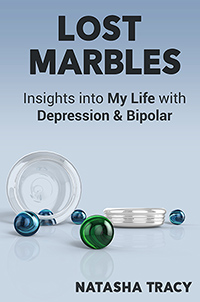Best of Bipolar Bites and Breaking Bipolar Blogs
Hi all. A lot happens around these parts in six weeks. As most of you know this month I launched a new blog on Healthline.com called Bipolar Bites and, of course, I still have my blog on HealthyPlace.com called Breaking Bipolar.
Bipolar Bites and Breaking Bipolar Articles
In case you haven’t kept up with your reading, here’s the best of what you might have missed in the last couple of months from both blogs:
- A discussion on the unique mental illness therapy deep brain stimulation and bipolar disorder in two parts: New Treatment for Bipolar – What is Deep Brain Stimulation? and Does Deep Brain Stimulation Work for Bipolar Disorder?
- Bipolar Disorder and Fixing Your Circadian Rhythm – The start of several article on light, darkness and your circadian rhythm in bipolar disorder.
- Can Treatment Noncompliance be Good? – An idea that is hard to bring up without seeming to endorse treatment noncompliance. Is treatment noncompliance sometimes the right thing?
- Lack of Understanding of Mental Illness and sometimes even Hatred Towards the Bipolar Community – it’s difficult for someone without a mental illness to understand what someone with a mental illness goes through every day. Here is some of what I go through that I don’t think people understand.
- Is Bipolar a Personality Disorder? – a question that gets asked frequently along with questions about bipolar disorder and identity.
- Mental Illness as a Disability – can we handle the idea that mental illness really is a disability like any other?
- Bipolar Depression and Feeling Nothing at All – a rarely discussed part of bipolar disorder – feeling nothing at all.
- Bipolar Disorder, Depression and Psychosis – psychosis, delusions and hallucinations, isn’t just a part of schizophrenia, as many of us know too well, it’s a part of bipolar mania, and even depression, as well. Recognition of Irritation and Anxiety is also important.
- Telling Your Family You Have a Mental Illness – You’re Not OK – we all face the battle of telling others about our illness, how do we do it and what do we do if family members remain in denial anyway?
- Why Didn’t Evolution Cull Bipolar Disorder? – Bipolar Benefits – are their evolutionary benefits to having bipolar disorder?
Oh, and the mental health resources page has been updated. Check it out.
If there’s a topic you’d like to see covered feel free to leave a comment below and I’ll see if it tickles my fancy.
Read More













Recent Comments